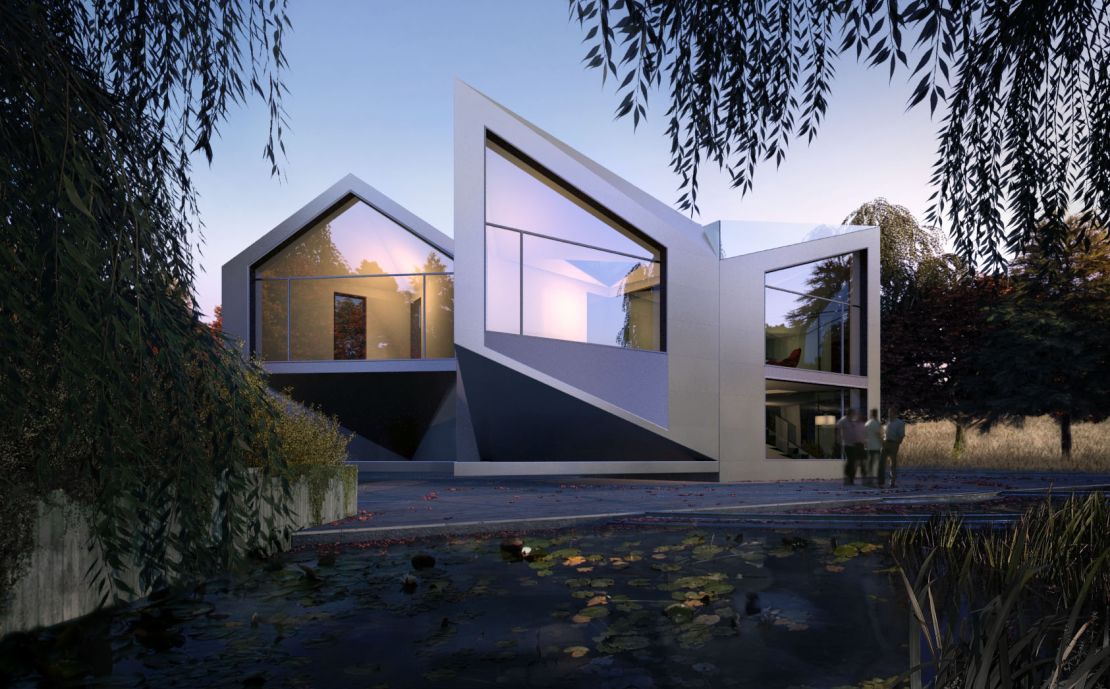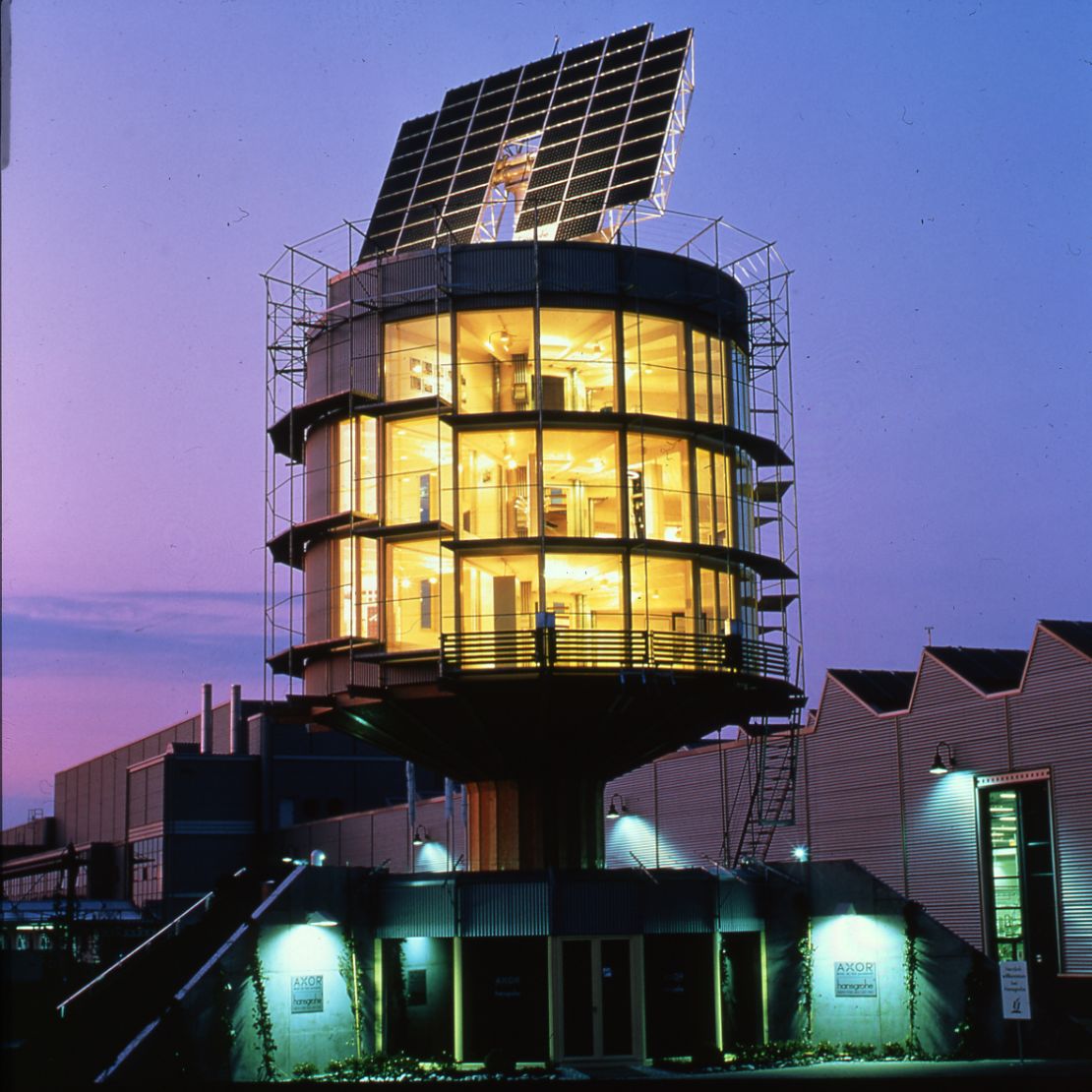Story highlights
Architects around the world are creating homes that move and rotate
These properties can unfurl in the summer to let in light, and living areas can be programmed to follow the sun throughout the day
Imagine living in a house that follows the direction of the sun when it’s hot.
Or one that offers a different view out of your bedroom window every day of the week.
For some bold homeowners this is becoming a reality, thanks to an innovative wave of architects who are re-imagining the concept of the house.
Once something firmly routed to the ground, homes are now becoming moving entities that can rotate, change shape, and even adapt to the seasons.
Different perspectives
The Everingham Rotating House is a riverside home nestled on the northern coast of New South Wales, Australia.
To a casual onlooker it looks like a regular home, with a wraparound verandah and views of a river nearby. But this octagonally shaped, 5,812 square feet (540 square meter) property can turn 360 degrees.
The key to its flexibility is the 78-foot (24-meter) diameter steel platform on which it sits. This plate can turn in both directions at 525 feet (160 meters) per hour in circumference speed – meaning the house can make two rotations per hour. Slower speeds are available.
What does it feel like to be inside a rotating home?
“You can’t really tell if the house is turning unless you focus on an outside object that is stationary,” owner Luke Everingham, an electrician who completed his dream home in 2006, tells CNN.
On the wall in the lounge room, a touch screen control panel offers the option to program one of the eight pie-shaped rooms to follow the sun. Residents can avoid the heat in the summer by setting the main living spaces to face away from the sun, and chase it in the winter.
Everingham tells CNN that he usually gives the house a full rotation first thing in the morning during winter, then has the living room follow the sun throughout the day.
The house cost approximately $243,000 to build, Everingham says, and he has since made a replica for a client based on Prince Edward Island in Canada.
Sustainable living
Rotating homes are not simply about trying to catch the best view, or change for the sake of it.
They can have serious environmental advantages.
“Creating buildings that can adapt (to their environment) is a much more sustainable way of living,” UK-based David Ben-Grunberg tells CNN.
With fellow architect Daniel Woolfson, Ben-Grunberg created the Dynamic D*Haus concept – a shape-shifting property, which was initially designed to cope with the extreme season swings of Lapland, where summers are scorching and winters are freezing.

Although still a concept, when built the house would be comprised of four modules, which could morph into eight fixed positions.
As the seasons heat up the home would unfurl “like a flower” – when the outer rooms roll out on rails, previously internal walls become external and doors become windows.
“The home imitates nature by opening up in the summer time to allow light and air into the building, and in the winter it literally cuddles itself to conserve heat and generate thermal mass,” Woolfson tells CNN.
Moving parts
Perhaps the most pioneering rotating building ever built is The Heliotrope, in Germany.
When completed in 1994, it became the first building in the world to capture more energy than it uses, according to its creator.
Designed by Germany-based architect Rolf Disch, each level in this futuristic four-story home is linked by a spiral staircase and built around a central column, which rotates 15 degrees per hour following the direction of the sun.

The home also features thermal insulated windows on one side, which both collect heat and keep it in the home, while the other side of the property features rock wool walls, with small windows.
The side of the home follows the sun in the summer, keeping the property cool – its small windows are positioned so that sunlight doesn’t directly shine through them.
Other environmentally friendly features of the Heliotrope include the use of grey water cleaning – where waste water from washing machines etc is collected and reused – and a solar sail with photovoltaic panels to collect energy on the rooftop.
The award-winning structure has been replicated twice in Germany since completion.
Life in rotation
So who would live in a rotating home?
Likely, someone with money – unsurprisingly, building a moving property isn’t cheap.
A Dynamic D*Haus, for example, would cost upwards of $2.43 million, says Ben-Grunberg.
He adds that many people interested in rotating homes have mobility issues, presenting “a whole demographic we never originally thought about” when first designing such properties.
Such homes appeal to those with accessibility issues because they can provide easier access to a particular site within the grounds of the home – such as the garden.
“This type of house is very refreshing compared to the visual norm of existing mobility design,” Ben-Grunberg tells CNN. “It is appealing for all people – but it’s a very brave visionary client that will take on a project like this.”
For Michael Jantzen, a New Mexico-based artist, who has designed a number of transformable home concepts – including the Rotating Radius House – it’s about craving a different way to live.
“(It’s) for people … who are not stuck in the rut of a conventional aesthetic.
“I see transformable homes becoming a trend in the future. If designed right, they can be very eco-friendly and provide a new and exciting way to live.”












